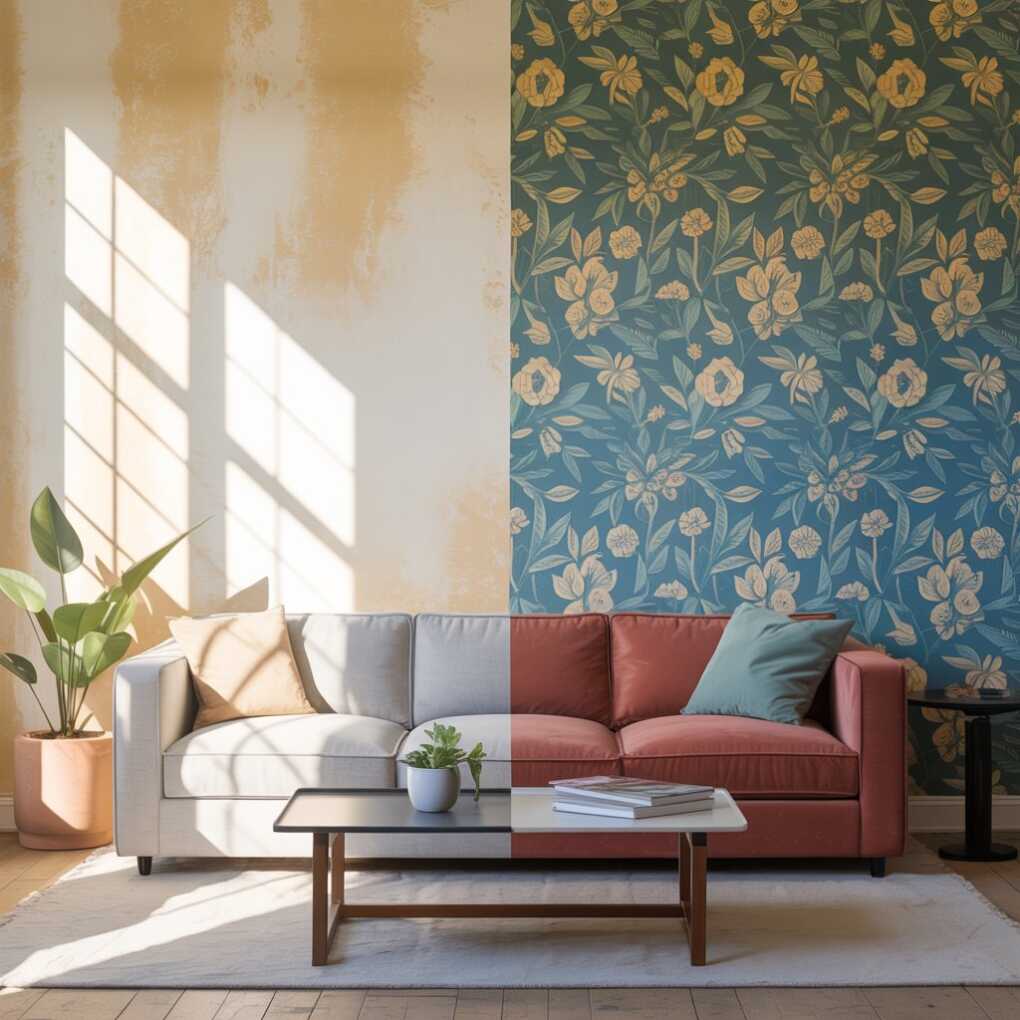You’ve got the furniture picked out, the lighting just right, and a Pinterest board full of color ideas. There’s only one decision left — the walls. Should you paint or wallpaper?
It sounds simple, but ask any interior professional and they’ll tell you — this one choice can completely define the mood of your space. It’s not just about color; it’s about texture, durability, and how you want your home to feel.
According to seasoned wallpaper installers in Joliet, IL, the answer isn’t one-size-fits-all. Some rooms are born for paint, others practically beg for wallpaper. The key is knowing what works best for your space, your lifestyle, and your patience level.
So let’s break it down — paint versus wallpaper, pros, cons, myths, and the little secrets experts swear by.

Paint: Simple, Flexible, and Budget-Friendly
Painting is the go-to for homeowners who love a quick refresh. It’s affordable, accessible, and offers nearly endless color choices. But like everything in design, it has its ups and downs.
Pros of Painting
- Budget-friendly and fast. Paint is generally cheaper than wallpaper, and you can change colors whenever you want without much prep.
- Simple DIY option. With a few tools and a free weekend, almost anyone can repaint a room.
- Endless color choices. From calm neutrals to bold statement hues, paint gives you total creative freedom.
- Easier to repair. Small scuffs or chips can be fixed with a touch-up instead of replacing an entire section.
Cons of Painting
- Shorter lifespan. Paint can fade, chip, or stain over time — especially in high-traffic or humid areas.
- Lacks depth and texture. While modern finishes like matte or eggshell help, paint alone can feel flat compared to wallpaper.
- More frequent maintenance. If you like your walls to look perfect, you’ll likely repaint every few years.
Wallpaper: Stylish, Durable, and Full of Personality
Wallpaper has made a major comeback, and for good reason. It adds dimension, character, and luxury that paint can’t quite replicate.
Advantages of Wallpaper
- Visual impact. Wallpaper instantly transforms a room. From subtle textures to bold prints, it creates a designer feel without the designer price tag.
- Long-lasting durability. Quality wallpaper can last 10–15 years or more — far longer than a typical paint job.
- Easy to clean. Most modern wallpapers are washable and stain-resistant, making them great for busy homes.
- Adds warmth and texture. Grasscloth, silk, vinyl, or linen finishes can bring depth and coziness to a space.
Disadvantages of Wallpaper
- Higher upfront cost. Between materials and installation, wallpaper usually costs more initially.
- More complex installation. It requires precision, patience, and sometimes professional help.
- Harder to remove or change. While peel-and-stick options make it easier, traditional wallpaper needs proper removal to avoid wall damage.
Cost and Maintenance Comparison
At first glance, paint wins on cost. A gallon or two plus a roller can give your room a whole new look. But when you factor in longevity, wallpaper often comes out ahead.
Paint may need refreshing every 3–5 years, while wallpaper can stay beautiful for over a decade with minimal upkeep. In the long run, wallpaper can actually be more cost-effective — especially in low-traffic areas like dining rooms or bedrooms.
Maintenance-wise, paint requires periodic touch-ups, while most wallpapers only need the occasional gentle wipe.
Expert Insights
What Interior Designers Recommend
Designers often consider the vibe of the room before making a call.
For quick updates or ever-changing trends, they lean toward paint. But for adding depth, character, or focal points, wallpaper wins every time. A well-chosen pattern can make even a modest room feel custom-designed.
Designers also note that wallpaper works beautifully in smaller spaces like powder rooms, where bold designs shine without overwhelming the eye.
When Professionals Suggest Mixing Both
The best of both worlds? Combining them.
Many professionals — including our Joliet team — recommend painting most of the walls in a neutral shade, then adding wallpaper on one feature wall. It’s an easy way to balance cost, texture, and personality without going all-in.
This combo approach lets you play with color and design without feeling locked into one style.
Choosing What’s Right for Your Space
Here’s how experts recommend making your final decision:
- For a modern, flexible home: Go with paint. It’s quick, affordable, and adaptable.
- For personality and statement-making spaces: Wallpaper wins. Especially in dining rooms, powder rooms, or offices where you want “wow” moments.
- For textured or imperfect walls: Wallpaper hides flaws better than any coat of paint.
- For rentals or frequent redecoration: Stick with paint — easier to change later.
- For forever homes: Invest in wallpaper. The quality and longevity will pay off in joy (and compliments).
And if you’re ever unsure, get advice from a local pro. Experienced installers can tell you which surfaces work best and even help with design selection.
Conclusion
In the end, there’s no wrong answer — just the one that fits you.
Painting offers flexibility and affordability, while wallpaper brings artistry and lasting beauty. Many homeowners start with paint, then add wallpaper as their confidence and creativity grow.
So before you pick up that brush or order those rolls, remember: your walls set the tone for your home. Whether you go for a bold print or a fresh coat of color, choose what makes you smile every time you walk through the door.
